Forging the Nation - Australia's own fleet
- Forging the Nation: home
- Federation
- National identity
- Seeking security
- The First World War
- Towards the future
- Australians
- Introduction
- Boer War
- Compulsory military service
- Australia's own fleet
- The Great White Fleet
- Cadets at the coronation
For the security of an island nation, a powerful navy seemed essential. The Royal Australian Navy was established on 10 July 1911, equipped with new warships ordered to supplement the small collection of vessels taken over from the colonial navies. The most powerful ship acquired, the battle-cruiser, HMAS Australia, became the flagship. It was launched on 25 October 1911 at Clydebank, Scotland, and arrived in Sydney on 4 October 1913.
There was great excitement in Sydney Harbour at the arrival of the flagship bearing the nation's name, accompanied by the cruisers Melbourne, Sydney, and Encounter and three destroyers. The new fleet was tiny in world terms, but it marked Australia's first step on the road to developing an independent naval defence capacity.
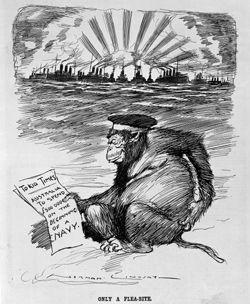
Only a flea-bite
From The Bulletin 1 August 1907, pg 1. By permission of National Library of Australia.
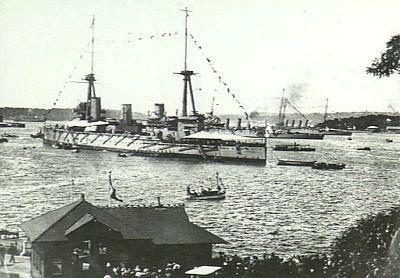
HMAS Australia
The Indefatigable-class battle cruiser, HMAS Australia, was the first flagship of the Royal Australian Navy. Launched in 1911, HMAS Australia arrived in Australia in 1913. Its main armament consisted of eight 12-inch guns. During the First World War this formidable warship saw service in the Pacific, where it took part in the capture of the German New Guinea colonies, and in the North Sea. It was present at the surrender of the German fleet at Scapa Flow in 1918. In 1924 it was scuttled off Sydney Heads in accordance with the disarmament provisions of the Washington Navy Treaty. Photographs, mounted in frames made from the ship's deck, were sold as souvenirs. AWMA03712
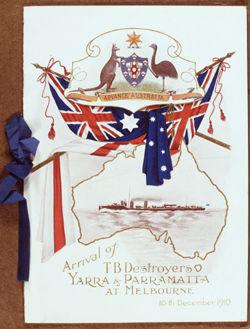
Celebrating Australia's own navy.
The Royal Australian Navy was formally established on 10 July 1911. The torpedo boat destroyers Yarra and Parramatta were the first ships specially built for Australia. In 1913, the flagship HMAS Australia arrived in Sydney Harbour and celebrations were conducted for the assembled fleet. AWM PROP 02040
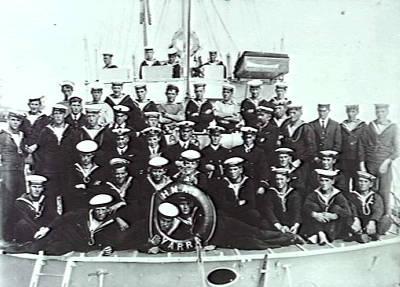
Early Royal Australian Navy uniform.
Officers and sailors of the new Australian navy were dressed in the traditional uniforms of the Royal Navy. This was the standard dress on board the coal-burning warships of that era. The cap tally ribbon denotes the ship on which the wearer served. AWMP01244.001
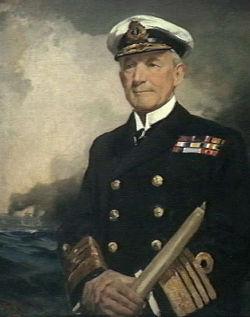
H. Septimus Power First World War official war artist
Admiral Sir George Patey
oil on canvas
painted in England 1925 ART09097
Commander of the Australian fleet.
In its early years the RAN retained strong links with Britain, served under the white ensign, and remained dependant on the Royal Navy. A British admiral, Sir George Patey, commanded the fleet from its establishment until 1915. On board HMAS Australia he was in charge of naval operations at Samoa, the capture of German New Guinea and in the pursuit of a German squadron in the Pacific.